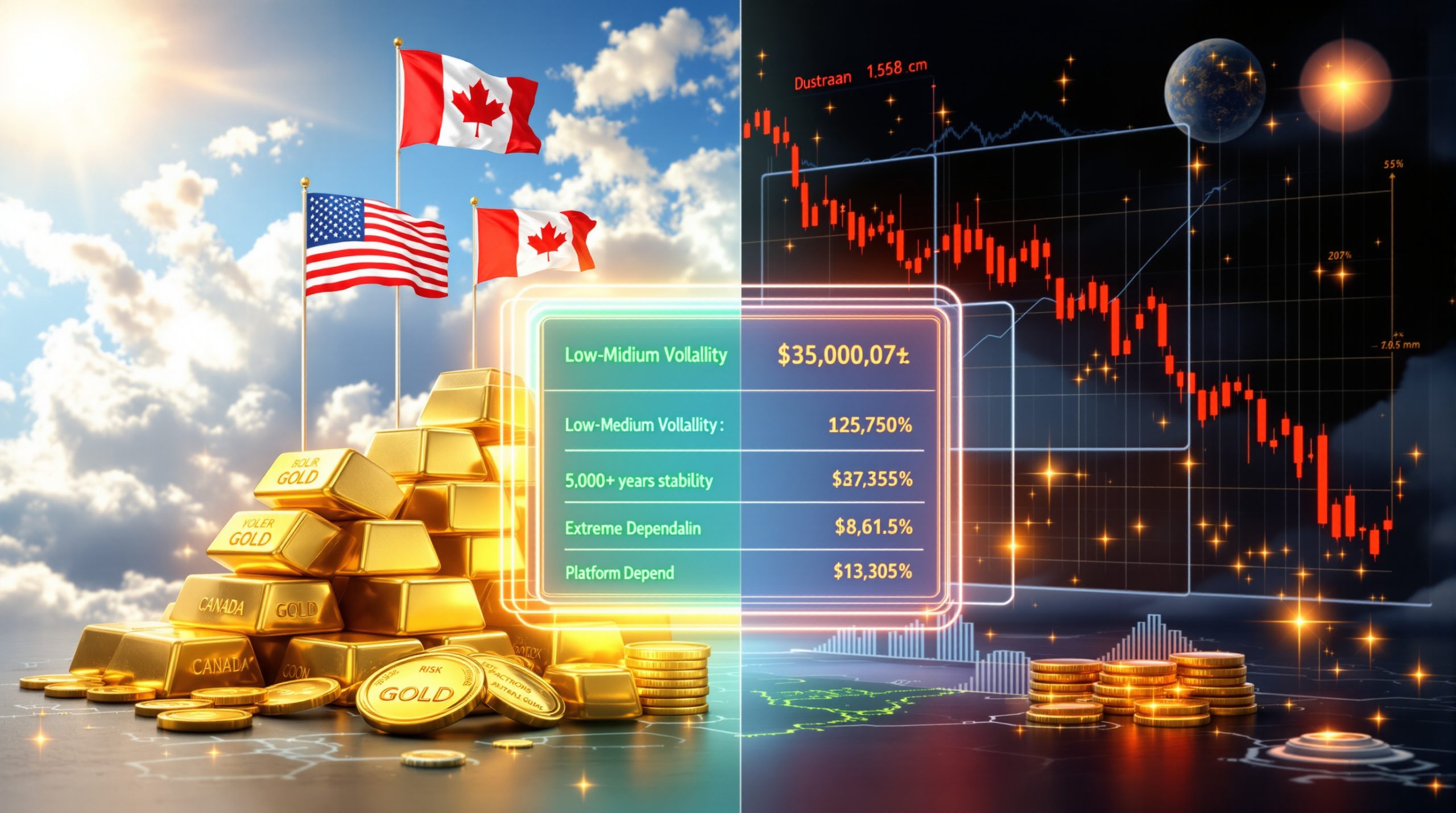China's Gold Market Reaches Unprecedented Heights
The precious metals landscape in China has undergone a remarkable transformation throughout 2025, with booming gold prices in China surging beyond $4,000 per ounce and creating ripple effects across the nation's economy. This extraordinary price appreciation has delivered the strongest annual performance in over four decades, fundamentally altering investment behaviors and masking deeper economic challenges within the world's second-largest economy.
What's Fueling China's Record-Breaking Gold Price Rally?
Central Bank Strategic Reserve Building
China's monetary authorities have embarked on an aggressive precious metals acquisition campaign, expanding official gold holdings to 2,303.5 tonnes by the third quarter of 2025. This systematic accumulation represents a calculated strategy to reduce exposure to dollar-denominated assets, with bullion now accounting for approximately 4-5% of total foreign exchange reserves.
Despite this increase, China's gold allocation remains below international benchmarks established by major central banks globally. The persistent buying pressure from institutional sources has created sustained upward momentum in both domestic and international markets, contributing significantly to the unprecedented price levels witnessed throughout 2025.
Geopolitical Uncertainty Premium
Rising global tensions have amplified gold's traditional role as a financial safe haven. The precious metal has attracted substantial international investment flows as investors seek protection against currency volatility and geopolitical instability. Furthermore, current market dynamics reflect heightened concerns about trade relationships and economic policy divergence between major economies.
The ongoing tensions between China and the United States have particularly influenced investor sentiment, with many viewing gold purchases as insurance against potential economic disruption. These safe haven dynamics have become embedded in current pricing structures, supporting elevated valuation levels across precious metals markets.
Monetary Policy Divergence Effects
China's unique economic position has created distinct investment patterns compared to Western economies. While many developed nations grapple with inflationary pressures, China faces persistent deflationary challenges that have lasted ten consecutive quarters as of November 2025.
Key Economic Indicators (October 2025):
| Metric | Value | Significance |
|---|---|---|
| Core CPI Growth | 1.2% | Fastest increase in nearly two years |
| Gold's CPI Contribution | ~50% | Disproportionate impact on inflation index |
| Deflationary Quarters | 10 consecutive | Persistent economic challenge |
| Food Price Change | -3% | Continued deflationary pressure |
According to analysis from Goldman Sachs and Shenwan Hongyuan Group, gold contributed approximately half of October's 1.2% core inflation increase, despite representing less than 1% of the consumer price basket. This disproportionate impact demonstrates how precious metals have become a primary driver of apparent inflation recovery.
Zichun Huang from Capital Economics noted that consumer price gains largely reflect temporary factors, most notably elevated gold prices, rather than genuine economic recovery from deflationary conditions. This assessment suggests supply and demand imbalances will continue creating deflationary pressures throughout 2026.
How Are Chinese Consumers Adapting to Soaring Gold Prices?
Dramatic Shift in Purchase Patterns
Chinese households have demonstrated remarkable adaptability as booming gold prices in China reached historic levels. Traditional consumption patterns have undergone significant transformation, with consumers increasingly distinguishing between decorative and investment purposes.
Consumer Response Analysis:
• Jewelry purchases declined substantially due to affordability constraints at elevated price levels
• Investment-grade gold demand surged as households sought wealth preservation
• Regional variations emerged in purchasing patterns and price tolerance
• Cultural preferences evolved from traditional gift-giving to strategic asset allocation
The National Bureau of Statistics reported approximately 50% year-over-year increases in gold jewelry prices during October 2025, creating significant sticker shock for traditional consumers who historically viewed gold jewelry as both gifts and stores of value.
Investment Versus Consumption Divide
This price surge has created a clear bifurcation in market behavior. While ornamental gold purchases have decreased due to cost considerations, investment-oriented buying has accelerated dramatically. Chinese consumers have become increasingly sophisticated in distinguishing between gold as a decorative item versus a financial asset.
The miscellaneous goods and services category within China's consumer price index, which includes gold jewelry, surged 12.8% year-over-year in October. This represents the largest increase among all CPI components, standing in stark contrast to food prices that declined almost 3% during the same period.
Regional Market Dynamics
Shanghai Gold Exchange prices have demonstrated resilience despite regulatory changes, including new tax monitoring systems designed to enhance transaction transparency. Market participants have shown minimal reaction to these administrative measures, indicating robust underlying demand fundamentals that override regulatory friction.
The persistence of elevated trading volumes and price levels suggests that Chinese gold demand reflects genuine economic motivations rather than speculative activity. This pattern indicates sustainable structural changes in precious metals allocation among Chinese households and institutions.
Global Market Impact of China's Gold Surge
Supply Chain Transformation
China's emergence as one of the world's most influential institutional gold buyers has fundamentally altered global supply dynamics. The nation's dual role as a major consumer market and central bank purchaser has created multiplier effects throughout international precious metals networks.
Global gold markets have experienced supply constraints as Chinese demand competes with international buyers for available inventory. This competitive dynamic has contributed to sustained price pressure across all major trading centres, from London to New York. According to recent analysis, China's gold buying pressure reflects strategic efforts to build firewall defences against potential economic weaponisation.
The scale of Chinese accumulation has necessitated adjustments in global allocation patterns, with other central banks and institutional investors adapting their acquisition strategies to account for sustained Chinese demand pressure.
Currency Strategy Implications
China's gold accumulation serves multiple strategic objectives beyond simple diversification:
• De-dollarisation efforts: Reducing dependence on US dollar reserves
• Inflation hedging: Protection against potential currency devaluation
• Economic signalling: Demonstrating financial strength during global uncertainty
• Strategic autonomy: Building independent monetary policy tools
These accumulated reserves provide Beijing with additional flexibility in international economic negotiations and reduce vulnerability to external monetary policy changes implemented by other major economies.
International Price Transmission
Chinese gold demand has increasingly influenced pricing mechanisms across global markets. Shanghai Gold Exchange premiums and trading patterns now significantly affect price discovery in London and New York, reversing historical patterns where Asian markets typically followed Western price leadership.
This shift reflects China's growing importance in global precious metals markets and demonstrates how domestic Chinese economic conditions can now influence international commodity pricing structures.
Economic Challenges Beneath the Gold Rally
Deflationary Pressure Masking
The extraordinary performance of gold prices has created an unusual economic phenomenon where a single commodity category temporarily obscures broader deflationary trends affecting China's economy. This masking effect has important implications for economic policy assessment and investor perceptions.
Sectoral Performance Comparison (October 2025):
| Category | Price Change | Economic Signal |
|---|---|---|
| Gold Jewelry | +50% | Extreme inflation |
| Food Products | -3% | Deflationary pressure |
| Housing Rentals | Negative | Continued weakness |
| Consumer Goods | Negative | Persistent deflation |
| Traditional Medicine | Negative | Broad-based weakness |
This divergence illustrates how booming gold prices in China have created a pocket of extreme inflation within an otherwise deflationary environment. The contrast demonstrates the unusual nature of current market conditions and highlights potential risks in relying on aggregate statistics for economic assessment.
Core Inflation Distortion
Despite gold and platinum jewellery representing less than 1% of the consumer price basket according to Citigroup analysis, their contribution to core inflation indices has reached several tenths of a percentage point. This disproportionate impact creates challenges for monetary policy assessment and economic forecasting.
However, the temporary nature of gold's inflation contribution raises questions about the sustainability of apparent price recovery. Economic analysts suggest that without genuine demand improvement in other sectors, deflationary pressures will reassert themselves once gold price appreciation moderates. Analysis suggests these booming gold prices are hiding China's deflationary challenges beneath the surface.
Broader Economic Indicators
A comprehensive analysis of nearly 70 everyday products and services revealed that price declines were more severe than official consumer price index figures indicated. This suggests that gold's exceptional performance has masked the true extent of deflationary conditions affecting Chinese consumers.
Retail sales have continued slowing while investment activity has declined, indicating that domestic demand remains structurally weak despite apparent inflation recovery driven by precious metals pricing.
Expert Forecasts for China's Gold Market
Price Trajectory Projections
Leading financial institutions have issued bullish forecasts for continued gold price strength, with several predicting sustained upward momentum through 2026. In addition, these rally price projections reflect expectations that current demand drivers will persist rather than prove cyclical.
Institutional Forecasts:
• J.P. Morgan: Expects gold to exceed $5,000 per ounce by the end of 2026
• Goldman Sachs: Anticipates continued central bank demand supporting elevated prices
• Market consensus: Projects structural support from ongoing Chinese institutional buying
• Industry analysts: Suggest geopolitical factors will maintain safe-haven demand
These projections reflect expectations that current demand drivers will persist rather than prove cyclical. Central bank purchasing patterns and geopolitical uncertainty are viewed as providing sustained support for precious metals valuations.
Policy Response Scenarios
Chinese authorities face complex trade-offs in responding to elevated gold prices. New value-added tax monitoring systems have been implemented to enhance transaction oversight, though market impact has proven minimal to date.
Consequently, policymakers must balance multiple objectives:
• Market stability: Preventing excessive speculation while maintaining liquidity
• Strategic objectives: Achieving reserve diversification goals
• Consumer protection: Ensuring fair pricing and transaction transparency
• Economic signalling: Managing international perceptions of economic policy
The limited regulatory response suggests authorities view current price levels as acceptable given broader strategic objectives, though enhanced monitoring capabilities provide tools for future intervention if necessary.
Long-term Market Evolution
The current gold rally represents more than cyclical commodity speculation, reflecting fundamental shifts in Chinese financial architecture. These changes include growing precious metals sophistication among retail investors and systematic institutional allocation toward non-dollar assets.
Industry experts suggest this transformation marks a permanent evolution in Chinese investment culture, with gold assuming a more prominent role in household wealth management strategies. This cultural shift could provide sustained demand support independent of short-term price movements.
Sustainability Assessment of the Gold Rally
Demand Sustainability Factors
Several structural elements support continued strength in Chinese gold markets:
• Institutional consistency: Central bank purchases remain systematic and predictable
• Consumer adaptation: Households adjusting purchase patterns to accommodate higher prices
• Industrial expansion: Technology sector demand continuing to grow
• Geopolitical persistence: Ongoing international uncertainty supporting safe-haven demand
• Cultural integration: Gold becoming more embedded in modern Chinese investment practices
These factors suggest current elevated demand levels may prove sustainable even if price appreciation moderates from current extreme levels. Furthermore, comprehensive gold price forecast analysis indicates sustained upward momentum driven by geopolitical and economic factors.
Potential Constraining Factors
However, several challenges could moderate the rally's continuation:
Economic Constraints:
• Affordability limits: Consumer price sensitivity at extreme valuation levels
• Economic recovery: Potential improvement in domestic conditions reducing safe-haven appeal
• Policy intervention: Government measures to moderate speculation if prices destabilise broader markets
• Supply response: Increased global mining production responding to elevated prices
The balance between supporting and constraining factors will likely determine whether current price levels represent a new equilibrium or require eventual adjustment.
Market Maturation Indicators
Evidence suggests Chinese gold markets are experiencing structural maturation rather than temporary speculation. The shift from consumption-oriented to investment-oriented demand patterns indicates growing financial market sophistication among Chinese participants.
This evolution toward mature market behaviour could provide stability during future price volatility, as participants become increasingly focused on long-term value preservation rather than short-term trading opportunities.
China's Gold Market: A New Financial Era
The unprecedented surge in booming gold prices in China represents far more than a cyclical commodity rally. This phenomenon reflects fundamental transformations in Chinese investment behaviour, monetary policy strategy, and global economic positioning that extend beyond traditional market dynamics.
While temporarily obscuring persistent deflationary pressures, the gold boom has revealed important insights about China's economic resilience and strategic adaptation. The ability of precious metals demand to create inflation pockets within a deflationary environment demonstrates both the scale of Chinese market influence and the complexity of modern economic relationships.
For instance, detailed gold highs analysis reveals the multifaceted nature of this phenomenon, whilst the precious metal's performance as a record inflation hedge has become increasingly evident throughout 2025.
For international investors and policymakers, understanding these dynamics becomes crucial as China's gold market evolution continues shaping global precious metals pricing and availability. The current rally may indeed mark the beginning of a new era where gold plays an increasingly central role in China's financial architecture and international economic strategy.
The sustainability of these developments depends largely on the persistence of current geopolitical tensions, continued central bank accumulation strategies, and China's broader economic trajectory. As these factors evolve, the gold market will serve as a crucial indicator of China's economic adaptation and global financial system transformation.
Disclaimer: This analysis is based on current market conditions and expert assessments as of November 2025. Gold prices and market dynamics are subject to significant volatility and change. Investors should conduct thorough research and consider professional advice before making investment decisions involving precious metals or China-related assets. Past performance does not guarantee future results, and all forecasts involve inherent uncertainty.
Ready to capitalise on the next major mineral discovery?
Discovery Alert instantly alerts investors to significant ASX mineral discoveries using its proprietary Discovery IQ model, turning complex mineral data into actionable insights just like the gold market opportunities highlighted above. Understand why historic discoveries can generate substantial returns by visiting Discovery Alert's dedicated discoveries page, showcasing exceptional outcomes from past mineral finds.




